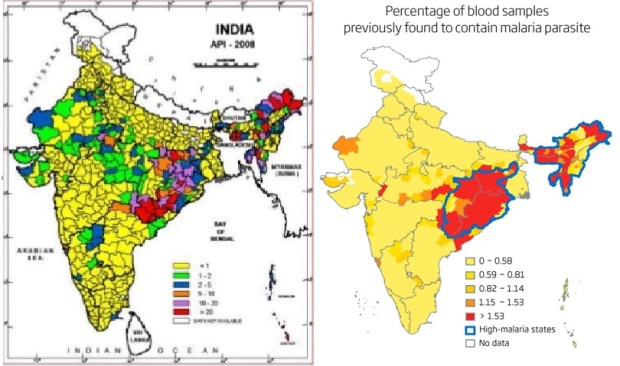In my previous post, I have discussed how cousin marriages are not, substantially, increasing the risk of Thalassemia in Pakistan. Yet, the gene frequency of thalassemia is about 7% in our population. If our inbreeding coefficient (measure of how many marriages are occurring between relatives in a population) is not high enough and provided that thalassemia would have once been rare, what could possibly explain this increase in thalassemia? There can be one plausible explanation and that is, for some reason, thalassemia gene is giving selective advantage to its carriers.
Individuals are said to have a selective advantage if they have a relatively, higher chance of mating and producing offspring in a population. There can be be one one way thalassemia would have had a selective advantage. And that is protection against Malaria. Malaria is a parasitic infection that has been endemic in south-Asia for a long time and many studies have shown that people who have thalassemia have some protection against Malaria [1],[2],[3] and [4]. This is because Malarial parasite lives in the blood and is optimized to live in a certain type of cell and cellular environment, so if you change that by having different chemicals in there because the gene is slightly different, the result is you will end up with a less hospitable home for the parasite to grow and as a result it doesn’t grow so well.
Children who would have thalassemia trait would survive more often through childhood Malarial infection compared to children who were not carriers of the trait. This way more children with thalassemia gene will grow old enough to mate and reproduce.

Distribution data for Pakistan is not available hence, just as a visual proof, I am comparing India’s distribution. The figure above shows the distribution of thalassemia distribution on left and on right the distribution of malaria. It looks exactly the same distribution, even with similar proportions. Picture references for left and right images are [5] and [6], respectively.
Foot Notes:
-
α +-Thalassemia and Protection from Malaria [ https://www.ncbi.nlm.nih.gov/pmc/articles/PMC1435782/ %5D
-
Does α +-Thalassaemia Protect against Malaria?[ https://www.ncbi.nlm.nih.gov/pmc/articles/PMC1457007/ ]
-
Thalassemia and malaria: new insights into an old problem. [ https://www.ncbi.nlm.nih.gov/pubmed/10417734 ]
-
Protection against malaria in the hemoglobinopathies [ https://www.uptodate.com/contents/protection-against-malaria-in-the-hemoglobinopathies ]
- https://www.slideshare.net/coolaniruddha3/a-comparative-study-of-renal-function-in-between-healthy-and-thalassemic-population
- http://www.durbantraveldoctor.co.za/